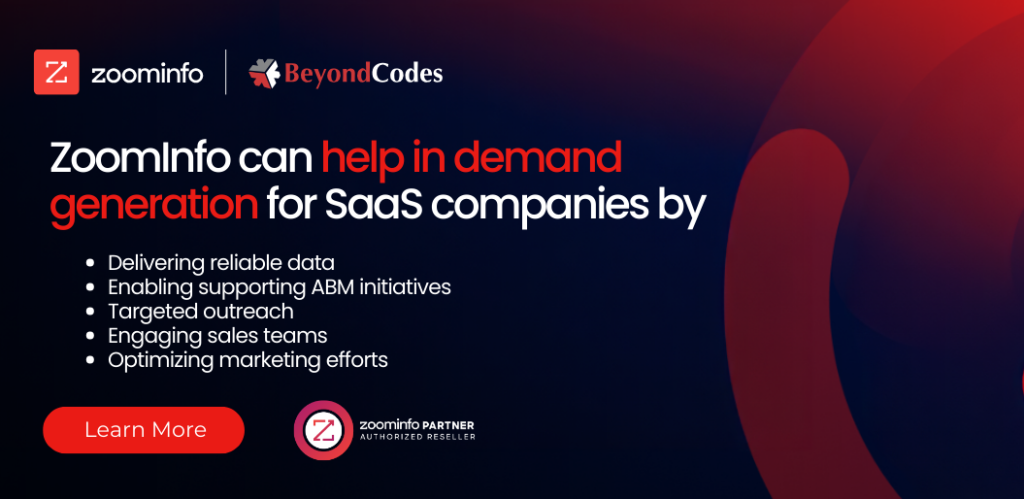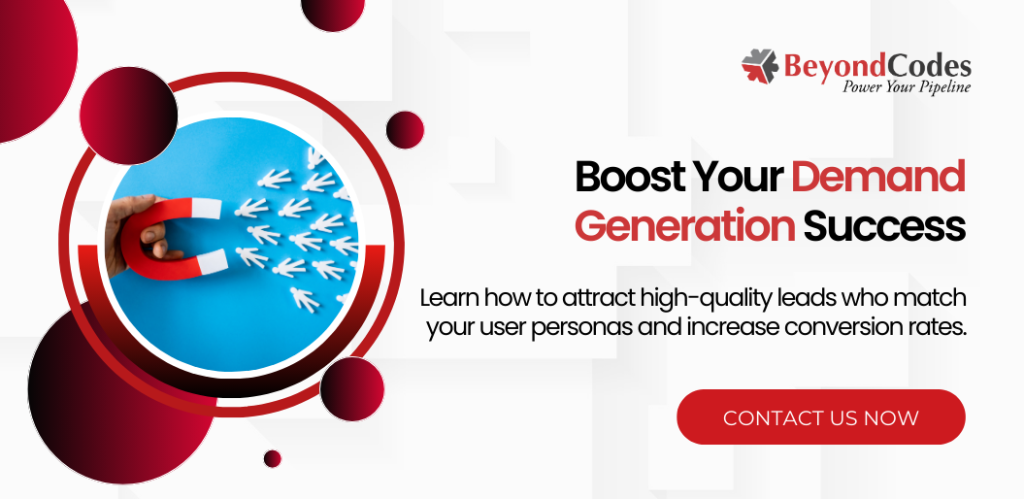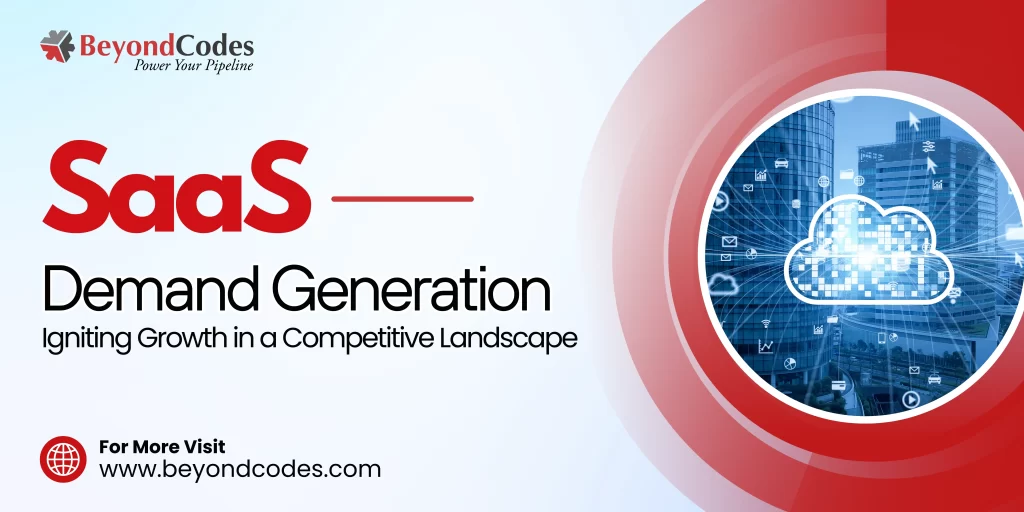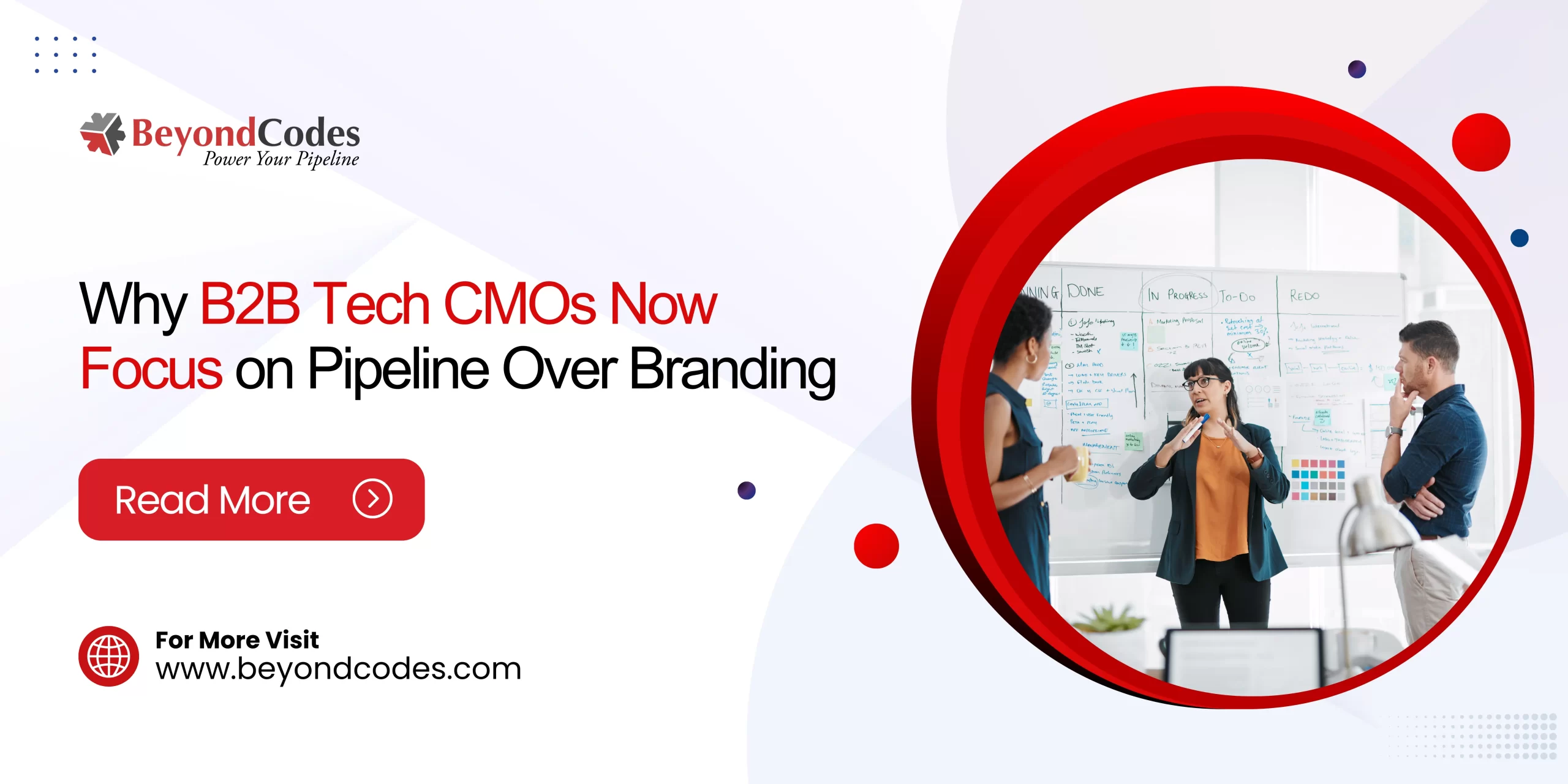Software as a Service (SaaS) has become a key component of global business operations. Businesses worldwide rely increasingly on cloud-based solutions to streamline sales operations, increasing the SaaS market.
The global Software as a Service (SaaS) market is expected to increase from $317.55 billion in 2024 to $1,228.87 billion in 2032, at a CAGR of 18.4% during the forecast period. North America reported a market value of USD 131.18 billion in 2023.
As the SaaS landscape expands, entrepreneurs have many opportunities to carve their niche in this burgeoning industry. The proliferation of social media platforms has lowered the barriers to entry, empowering aspiring SaaS founders to launch and promote their ventures with relative ease. A daunting challenge lies in the promise of success: Lead Generation.
According to Ascend, 42% of B2B marketers say lead generation is their biggest challenge.
A B2B SaaS company frequently needs help to engage potential clients, generate leads, and grow its business in an industry where visibility is critical and competition is intense.
The key? Demand generation.
| Table of Contents: Introduction What is Demand Generation for SaaS? The Stages of a SaaS Demand Generation Roles of Demand Generation for SaaS Growth SaaS Demand Generation Challenges and Solutions Measuring the Success of Demand Generation Strategy for a SaaS Company How Beyond Codes Inc. Masters Demand Generation for SaaS Companies To Wrap Up |
What is Demand Generation for SaaS?
Demand generation is critical for B2B SaaS companies, enabling them to build a robust sales pipeline of quality leads and drive customer acquisition. It entails strategic planning and implementing marketing and sales initiatives to raise awareness, attract interest, and convert leads into paying customers.
This strategy extends beyond lead generation to gather the contact information of uninterested buyers. Effective B2B demand generation involves:
- A deep insight into the ideal customer profile (ICP).
- Creating engagement opportunities based on the buyer persona.
- Taking these prospective buyers from curiosity to the sales process.
Demand generation differs from traditional lead generation, which nurtures prospects throughout the buyer’s journey rather than just generating leads. SaaS companies must develop an effective demand generation strategy because it delivers a reliable and scalable revenue stream and fills the sales pipeline with new opportunities.
The Stages of a SaaS Demand Generation
Stage 1: Building Brand Awareness
This stage focuses on increasing brand recognition and identifying the audience’s pain points. Businesses understand their target market’s needs through strategies such as social listening, customer surveys, and competitive analysis. Targeted marketing efforts such as LinkedIn ads, account-based marketing, podcasts, and collaborations with influencers help reach your target audience efficiently.
Stage 2: Monitoring Account Engagement
The next step after establishing brand awareness is to track and analyze the engagement of target accounts. It includes using analytics tools like Google Analytics and Heatmaps to monitor website traffic, content collaboration, and client satisfaction. Social media monitoring is also essential for collecting insights into client behavior and preferences, which SaaS companies can use to inform future marketing strategies.
Stage 3: Demand Capture
The final stage aims to capture the demand generated by prior initiatives. Build trust through personalized outreach to product champions and decision-makers. Retargeting ads highlight the software’s benefits, provide trials to engaged leads, and nurture them to conversion. Businesses can use these efforts to efficiently generate leads and set appointments, driving growth in the B2B SaaS industry.
Roles of Demand Generation for SaaS Growth
Creating Awareness
- Build strategies to raise the visibility of the target audience and awareness of the SaaS product.
- To reach prospective clients, present your engaging sales pitch through various platforms, like social media posts, email marketing campaigns, and paid advertising.
Developing Interest
- Create appealing messages and value propositions that pique the interest of potential clients.
- Execute targeted marketing initiatives to acquire leads and inspire them to adopt the SaaS solutions.
Lead Nurturing
- Create lead nurturing processes that guide prospects through the buying process.
- Provide useful content, sales pitch, and resources that meet potential clients’ requirements and pain points.
Trust Building
- Build credibility and trust with prospects by providing thought leadership and informative content.
- Show customer success stories, case studies, and testimonials to prove the value of the SaaS solution.
Conversion Optimization
- Implement strategies for improving conversion rates at every stage of the customer journey.
- Conduct A/B testing and analysis to identify areas for improvement and customize sales & marketing strategies accordingly.
Customer Retention
- Develop strategies to increase client satisfaction and loyalty.
- Provide continuous support and tools to help customers get the most out of their SaaS service.
Data Analysis and Reporting
- Monitor key performance measures to assess the efficacy of demand generation strategies.
- Analyze data to uncover trends, insights, and opportunities for enhancement.
SaaS Demand Generation Challenges and Solutions
Demand generation in the SaaS industry is challenging because of its highly competitive nature. Here are a few common challenges and ways to overcome them:
- Generating Qualified Leads
Due to rising competition and changing client behavior, Demand Generation for SaaS-based companies frequently struggles to generate high-quality leads efficiently.
Solution: By combining advanced lead scoring algorithms with AI and machine learning, leads are identified and prioritized based on their potential clients to convert. Furthermore, customized content (messaging, sales pitches, or emails) and targeted marketing campaigns based on buyer personas can improve lead quality.
- Data Management and Integration
Managing and integrating vast quantities of data from multiple sources can be challenging for SaaS Demand Generation, resulting in inaccurate and inefficient targeting and segmentation.
Solution: Using robust data management platforms and integration technologies helps streamline data gathering, cleansing, and integration methods. APIs and automation allow seamless data flow between disparate systems, assuring data accuracy and consistency.
- Attribution and ROI Measurement
Demand Generation for SaaS-based companies frequently struggles to determine the exact impact of campaigns and appropriately attribute conversions across multiple channels.
Solution: Using advanced attribution models, such as multi-touch or algorithmic attribution, can provide more information about the influence of each marketing touchpoint on conversions. Integrating marketing analytics platforms with CRM systems can also help track and assess ROI more efficiently.
- Emerging Technology Landscape
Keeping up with the constantly evolving technology world, which includes new platforms, channels, and tools, is an ongoing challenge for SaaS Demand Generation.
Solution: Continuous investment in research and development is critical for adapting and innovating in response to emerging technology. Offering flexible and scalable architectures that are easy to integrate with new technologies and platforms promotes future readiness.
- Customization At Scale
Delivering customized demand generation experiences to a wide audience at scale is challenging for SaaS companies, particularly if relevance and efficacy are not compromised.
Solution: Using AI-driven personalization engines helps automate adapting content and messaging to individual preferences and behaviors. Delivering personalized experiences to a large audience at scale can be daunting for Demand Generation SaaS platforms, especially without compromising relevance and effectiveness.
Measuring the Success of Demand Generation Strategy for SaaS Company
Generating demand for your product is one thing, but you must also be able to evaluate the effectiveness of your campaigns. After all, what benefit is a demand generation strategy if you need help identifying whether it’s working?
Fortunately, there are many ways to evaluate the effectiveness of your demand generation strategies. Here are the key metrics to monitor:
1. Leads Generated: This metric measures the number of potential clients you’ve chosen. Without leads, sales opportunities are limited.
2. Cost per lead: This metric will show you the cost of generating a lead. The lesser the cost per lead, the better your efforts will perform.
3. Lead conversion rate: This metric represents the number of quality leads you to convert into paying clients. The greater the lead conversion rate, the more successful your demand generation efforts will be.
4. Client lifetime value: This metric calculates the amount of money you can expect to generate from a client during their lifetime. The higher the client lifetime value, the more effective your demand generation campaigns will be.
5. Customer churn rate: It indicates the number of clients who quit their memberships or discontinue using your product. The lesser the client churn rate, the more successful your demand generation strategy will be.
By tracking the performance of your SaaS demand generation efforts, you can guarantee that you are making the best use of your resources and generating the most significant return on investment.
How Beyond Codes Inc. Masters Demand Generation for SaaS Companies
The innovative approach to demand generation at Beyond Codes Inc. prioritizes the process of acquiring leads with complete training. Embracing the principle of giving value without barriers, their strategy transforms how SaaS companies communicate with prospects.
Learning Approach
Beyond Codes Inc. has a unique approach to SaaS demand generation that prioritizes learning above immediate lead capture. Instead of limiting content to lead forms, the emphasis is on offering relevant content to prospects without restriction.
Value-Oriented Content
The goal is to provide maximum value to prospects at no cost and with minimal friction. Prospects are empowered to make informed decisions by giving important information and resources upfront, and they will naturally gravitate towards your solution when they are ready to invest.

Active Engagement
While the strategy prioritizes education, it does not exclude active participation. Beyond Codes Inc. uses Account-Based Marketing (ABM), retargeting ads, email marketing, and other methods to increase awareness, nurture interest, and drive conversions.
Continuous Optimization
Beyond Codes Inc. understands the value of monitoring and optimizing demand generation initiatives. They keep their strategy effective by monitoring metrics like Marketing Qualified Leads (MQLs), funnel conversion rates, and cost-per-lead indicators.
To Wrap Up
As the SaaS industry evolves and expands, understanding the art of demand generation is a game changer for B2B SaaS companies aiming to compete in a more competitive environment. By embracing innovation, harnessing technology, and adopting customer-centric initiatives, B2B SaaS companies can fuel growth and establish themselves as industry leaders.

Author
-
With 7+ years of experience and a background in media & communication, she brings stories to life that fuel lead generation success. She transforms complex B2B ideas into content that is clear, engaging, and results-driven—helping key decision-makers take action. A good cup of coffee fuels her writing ideas, and when off the clock, she enjoys unwinding with her dog by her side.








